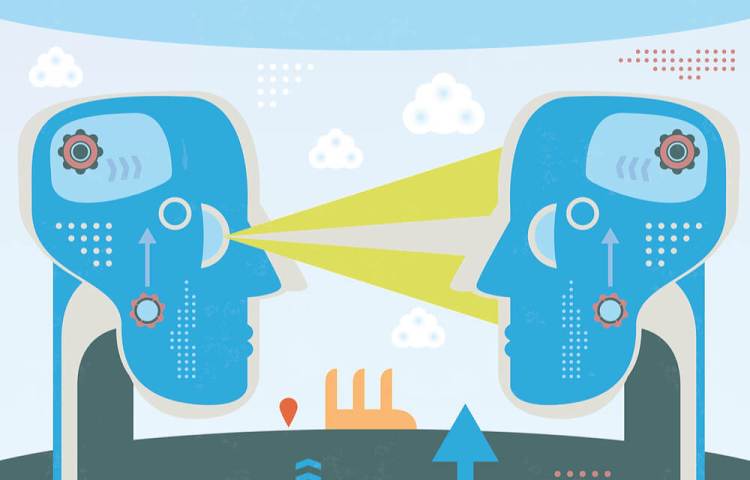With programmatic CRM, marketers are now able to deliver on the promise of the right message at the right time to the right customer — meaning a shift into real customer-centric marketing that can more than double profits.
Access this free VB Live event on demand right here.
It is by an order of several magnitudes more expense to acquire a new customer than it is to simply retain them. But that’s where too many marketers are focused, says Shannon Johlic, director of marketing at Blueshift. You get them through the door, have them make that purchase, or sign on that dotted line — and then it’s back to the races to chase more customers through your front door.
“We’re forgetting that next part of the customer journey,” Johlic says. “You have them. What are you doing to keep them? What are you doing to respect them and give them value for this loyalty and information and the hard-earned dollars they’ve given you?”
The perpetually connected customer is jumping between devices and on dozens of channels, making purchases not after weeks of decision-making, but days, sometimes hours, and not just expecting hyperpersonalization, but demanding it. And yet the current marketer is still focused on talking at an audience, instead of to them; sending out mass messages that are essentially yelling at their customers, rather than opening up a dialog.
Marketers need to shift from a channel-centric mindset to a customer-centric view, putting the customer first — not a product or a process — to build a relationship. In fact, Deloitte & Touche found that companies that are customer-centric are 60 percent more profitable.
“Fundamentally it means treating customers with the respect they deserve,” says Brian Monahan, co-founder of NewCo, a media company about business transformation, and former CMO at Walmart. “For us, it comes down to figuring out who is in what industry and what type of job and what location, and then reflecting what we know about them to deterime what we present to them.”
At Walmart, that meant helping people save money on their everyday needs in life by understanding who that customer was, and what she was looking for at that moment.
“Frankly, in using data to personalize, we would get far more customer complaints about ‘Why you don’t know me better? You guys should know this about me,’ as opposed to ‘How did you know that? Why are you tracking me?’” he adds.
Jeff Pash, director of CRM at The Muse, an in-depth online career resource, notes that their company is founded on the idea of developing empathy for their customer on a one-to-one basis.
“The biggest complaint we hear from people out there job searching is that they just feel like they’re alone,” Pash says. “Everything we do, we try to do it with empathy for the user. So what we’ve started to do is just try to identify how we can figure out where people are in their career and then serve them the right information, whether it’s a job posting or an article or whatever it may be.”
The more their consumers can feel like they’re not alone and that theirs is a common struggle, he adds, the better they’ll feel about the job search and hopefully the faster they’ll get a job — or achieve any of the career goals they’re striving for.
“Fundamentally it’s about respecting that individual who’s struggling with something or who wants to learn something or wants to improve,” says Pash. “And if we do everything with that respect, those retention rates will just keep going up.”
Programmatic CRM comes in by offering a new way to unify and process and then executing on the most important data you have — gathering first-party data by being in the moment with the customer across all the channels they travel.
“Programmatic CRM unifies a system of record, a system of intelligence, and a system of action,” Johlic explains. “Programmatic CRM is the heart of all that — not just analysis, it’s not just data gathering, it’s not just here’s some actionable insights, it’s creating the ability to actionize on those insights — to actually push out and communicate with these people at that level, to remain customer-centric.”
“It’s not forgetting the core of what we do; it’s building workflows and messaging and calls to action as marketers,” he adds.
Stuart Rogers, director of marketing technology, warns against forgetting some of the fundamentals of customer connection when you dive into a data-drawn portrait of your users.
“Marketing technology is helping to increase customer centricity without having to go down the hyperpersonalization route and segments of one,” he explains. “It’s transparency and two-way conversations with customers to create a customer-centric culture.”
He cites an online bespoke clothes retailer that ensured each customer was updated on every aspect of their delivery, from manufacturing to delivery. “That’s an example of transparency at scale, in order to make the individual feel like they’re being loved and looked after,” Rogers says. “And it’s that sort of surprise and delight that comes from enabling transparency across the business.”
For insight into where, when, and how to start leveraging programmatic CRM to dramatically boost customer satisfaction, don’t miss this VB Live event.
Don’t miss out!
Access this VB Live event on demand right here.
In this VB Live event, you’ll:
- Target precise messages and optimize user retention across all of your marketing channels
- Learn how your first-party data, including user behavior, transactions, and your catalog of content/products drives scalable individualized user experiences
- Prevent or eliminate the potential of fraud
Speakers:
- Brian Monahan, co-founder, NewCo, former CMO, Walmart
- Jeff Pash, Director of CRM, The Muse
- Shannon Johlic, Director of Marketing, Blueshift
Moderator:
- Wendy Schuchart, Moderator, VentureBeat
This VB Live event is sponsored by Blueshift.

